Dremel 1100 Handleiding
Dremel
Slijpmachine
1100
Bekijk gratis de handleiding van Dremel 1100 (68 pagina’s), behorend tot de categorie Slijpmachine. Deze gids werd als nuttig beoordeeld door 103 mensen en kreeg gemiddeld 5.0 sterren uit 52 reviews. Heb je een vraag over Dremel 1100 of wil je andere gebruikers van dit product iets vragen? Stel een vraag
Pagina 1/68

DREMEL
DREMEL
DREMEL
DREMEL
DREMEL
Instructional Safety
Manual
Model 1100
Stylus™Cordless Rotary Tool
Form No. 2610930085 11/05 Robert Bosch Tool Corporation © 2005
All Rights Reserved
1-800-437-3635
http://www.dremel.com
Dremel brand products are manufactured and sold by the
Dremel Division of Robert Bosch Tool Corporation
DM 2610930085 11-05 11/30/05 2:56 PM Page 1

Page 2
General Safety Rules
Read all instructions. Failure to follow all instructions listed below may result in
electric shock, fire and/or serious injury. The term “power tool” in all of the warnings listed
below refers to your mains-operated (corded) power tool or battery-operated (cordless) power tool.
SAVE THESE INSTRUCTIONS
!
WARNING
Work area safety
Keep work area clean and well lit. Cluttered or dark
areas invite accidents.
Do not operate power tools in explosive atmos-
pheres, such as in the presence of flammable
liquids, gases or dust. Power tools create sparks
which may ignite the dust or fumes.
Keep children and bystanders away while operating
a power tool. Distractions can cause you to lose
control.
Electrical safety
Power tool plugs must match the outlet. Never modify
the plug in any way. Do not use any adapter plugs
with earthed (grounded) power tools. Unmodified
plugs and matching outlets will reduce risk of electric
shock.
Avoid body contact with earthed or grounded
surfaces such as pipes, radiators, ranges and
refrigerators. There is an increased risk of electric
shock if your body is earthed or grounded.
Do not expose power tools to rain or wet conditions.
Water entering a power tool will increase the risk of
electric shock.
Do not abuse the cord. Never use the cord for
carrying, pulling or unplugging the power tool.
Keep cord away from heat, oil, sharp edges or
moving parts. Damaged or entangled cords increase
the risk of electric shock.
When operating a power tool outdoors, use an
extension cord suitable for outdoor use. Use of a
cord suitable for outdoor use reduces the risk of elec-
tric shock.
Do not use AC only rated tools with a DC power
supply. While the tool may appear to work, the elec-
trical components of the AC rated tool are likely to fail
and create a hazard to the operator.
If operating the power tool in damp locations is
unavoidable a Ground Fault Circuit Interrupter
(GFCI) must be used to supply the power to your
tool. GFCI and personal protection devices like
electrician’s rubber gloves and footwear will further
enhance your personal safety.
Personal safety
Stay alert, watch what you are doing and use
common sense when operating a power tool. Do not
use a power tool while you are tired or under the
influence of drugs, alcohol or medication. A
moment of inattention while operating power tools
may result in serious personal injury.
Use safety equipment. Always wear eye protection.
Safety equipment such as dust mask, non-skid safety
shoes, hard hat, or hearing protection used for
appropriate conditions will reduce personal injuries.
Avoid accidental starting. Ensure the switch is in
the off-position before plugging in. Carrying power
tools with your finger on the switch or plugging in
power tools that have the switch on invites accidents.
Remove any adjusting key or wrench before turning
the power tool on. A wrench or a key left attached to
a rotating part of the power tool may result in
personal injury.
Do not overreach. Keep proper footing and balance
at all times. This enables better control of the power
tool in unexpected situations.
Dress properly. Do not wear loose clothing or
jewelry. Keep your hair, clothing and gloves away
from moving parts. Loose clothes, jewelr or longy
hair can be caught in moving parts.
If devices are provided for the connection of dust
extraction and collection facilities, ensure these
are connected and properly used. Use of these
devices can reduce dust-related hazards.
Keep handles dry, clean and free from oil and
grease. Slippery hands cannot safely control the
power tool.
Power tool use and care
Do not force the power tool. Use the correct power
tool for your application. The correct power tool will
do the job better and safer at the rate for which it was
designed.
Do not use the power tool if the switch does not turn
it on and off. Any power tool that cannot be
controlled with the switch is dangerous and must be
repaired.
Disconnect the plug from the power source and/or
the battery pack from the power tool before making
any adjustments, changing accessories, or storing
power tools. Such preventive safety measures reduce
the risk of starting the power tool accidentally.
Store idle power tools out of the reach of children
and do not allow persons unfamiliar with the power
tool or these instructions to operate the power tool.
Power tools are dangerous in the hands of untrained
users.
DM 2610930085 11-05 11/30/05 2:56 PM Page 2

Maintain power tools. Check for misalignment or
binding of moving parts, breakage of parts and any
other condition that may affect the power tools
operation. If damaged, have the power tool
repaired before use. Many accidents are caused by
poorly maintained power tools.
Keep cutting tools sharp and clean. Properly main-
tained cutting tools with sharp cutting edges are less
likely to bind and are easier to control.
Use the power tool, accessories and tool bits etc.,
in accordance with these instructions and in the
manner intended for the particular type of power
tool, taking into account the working conditions and
the work to be performed. Use of the power tool for
operations different from those intended could result
in a hazardous situation.
Use clamps or other practical way to secure and
support the workpiece to a stable platform. Holding
the work by hand or against your body is unstable and
may lead to loss of control.
Battery tool use and care
Ensure the switch is in the off position before insert-
ing battery pack. Inserting the battery pack into
power tools that have the switch on invites accidents.
Recharge only with the charger specified by the
manufacturer. A charger that is suitable for one type
of battery pack may create a risk of fire when used
with another battery pack.
Use battery tools only with specifically designated
battery packs. Use of any other battery packs may
create a risk of injury and fire.
When battery pack is not in use, keep it away from
other metal objects like paper clips, coins, keys,
nails, screws, or other small metal objects that can
make a connection from one terminal to another.
Shorting the battery terminals together may cause
burns or a fire.
Under abusive conditions, liquid may be ejected
from the battery, avoid contact. If contact acciden-
tally occurs, flush with water. If liquid contacts
eyes, additionally seek medical help. Liquid ejected
from the battery may cause irritation or burns.
Service
Have your power tool serviced by a qualified repair
person using only identical replacement parts. This
will ensure that the safety of the power tool is main-
tained.
Develop a periodic maintenance schedule for your
tool. When cleaning a tool be careful not to disas-
semble any portion of the tool since internal wires
may be misplaced or pinched or safety guard return
springs may be improperly mounted. Certain clean-
ing agents such as gasoline, carbon tetrachloride,
ammonia, etc. may damage plastic parts.
SAVE THESE INSTRUCTIONS
Safety Rules for Cordless Rotary Tools
Hold tool by insulated gripping surfaces when per-
forming an operation where the cutting tool may
contact hidden wiring. Contact with a "live" wire will
make exposed metal parts of the tool "live" and shock
the operator.
Use clamps or other practical way to secure and
support the workpiece to a stable platform. Holding
the work by hand or against your body is unstable and
may lead to loss of control.
Accessories must be rated for at least the speed
recommended on the tool warning label. Wheels
and other accessories running over rated speed can
fly apart and cause injury.
If cutting into existing walls or other blind areas
where electrical wiring may exist is unavoidable, dis-
connect all fuses or circuit breakers feeding this
worksite.
Disconnect battery pack from tool or place the
switch in the locked or off position before making
any assembly, adjustments or changing acces-
sories. Such preventive safety measures reduce the
risk of starting the tool accidentally.
Be aware of the switch location, when placing the
tool down or when picking the tool up. You may acci-
dentally activate the switch.
Always hold the hand piece firmly in your hands
during the start-up. The reaction torque of the motor,
as it accelerates to full speed, can cause the shaft to
twist.
Always wear safety goggles and dust mask. Use
only in well ventilated area. Using personal safety
devices and working in safe environment reduces risk
of injury.
After changing the bits or making any adjustments,
make sure the collet nut and any other adjustment
devices are securely tightened. Loose adjustment
device can unexpectedly shift, causing loss of control,
loose rotating components will be violently thrown.
Do not reach in the area of the spinning bit. The
proximity of the spinning bit to your hand may not
always be obvious.
Allow brushes to run at operating speed for at least
one minute before using wheel. During this time no
one is to stand in front or in line with the brush.
Loose bristles or wires will be discharged during the
run-in time.
Page 3
DM 2610930085 11-05 11/30/05 2:56 PM Page 3
Product specificaties
| Merk: | Dremel |
| Categorie: | Slijpmachine |
| Model: | 1100 |
Heb je hulp nodig?
Als je hulp nodig hebt met Dremel 1100 stel dan hieronder een vraag en andere gebruikers zullen je antwoorden
Handleiding Slijpmachine Dremel

22 Januari 2023

22 Januari 2023

22 Januari 2023

22 Januari 2023

22 Januari 2023

22 Januari 2023

22 Januari 2023

22 Januari 2023

22 Januari 2023
Handleiding Slijpmachine
- NEO Tools
- Bunn
- Hyundai
- Bavaria By Einhell
- Duro Pro
- Ergofix
- Victoria Arduino
- Tanaka
- Handwerk
- Westfalia
- Workzone
- Chicago Pneumatic
- Duro
- Metabo
- Graphite
Nieuwste handleidingen voor Slijpmachine
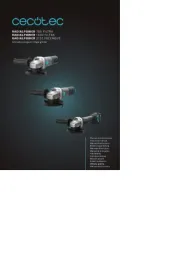
5 Augustus 2025
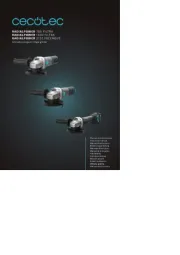
5 Augustus 2025
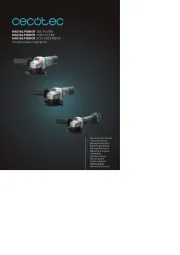
4 Augustus 2025
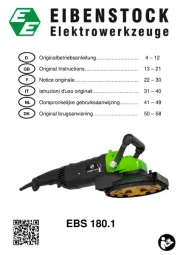
4 Augustus 2025
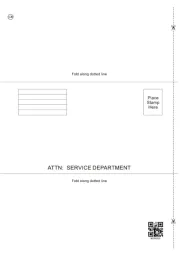
4 Augustus 2025
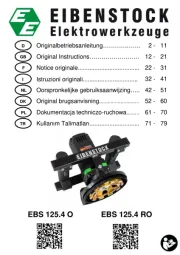
4 Augustus 2025
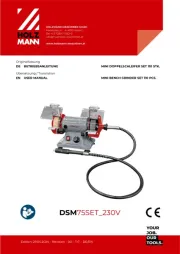
4 Augustus 2025
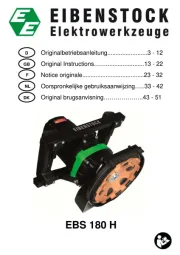
4 Augustus 2025
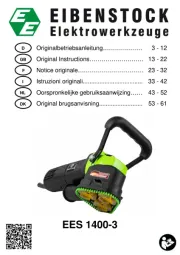
4 Augustus 2025
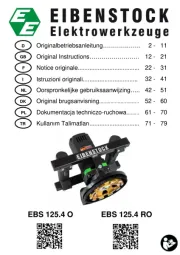
4 Augustus 2025